I decided to make pemmican for the first time a year ago. I used 6 lbs. lean beef, 2 lbs. tallow and 1/3 cup fresh blueberries. It took me around 30 minutes (prep time) and the cooking process lasted around 15 hours.
Instructions:
Gather all the ingredients together.
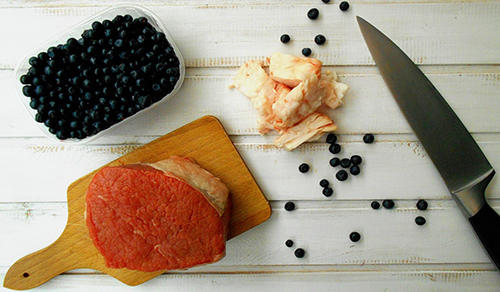 Slice the meat very thin. To get perfectly thin slices of meat, place your beef in the freezer for 2 hours. This will make the meat firm enough to handle, and you will be able to cut it easily. Arrange the beef slices on the wire rack, leaving some space for the blueberries. Place your blueberries in aluminum foil or a disposable baking tray. If using the plain aluminum foil, fold the edges so your blueberries stay in place.
Slice the meat very thin. To get perfectly thin slices of meat, place your beef in the freezer for 2 hours. This will make the meat firm enough to handle, and you will be able to cut it easily. Arrange the beef slices on the wire rack, leaving some space for the blueberries. Place your blueberries in aluminum foil or a disposable baking tray. If using the plain aluminum foil, fold the edges so your blueberries stay in place.
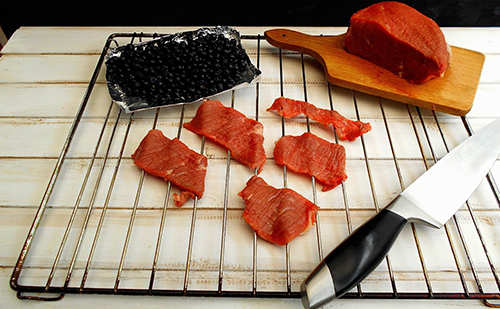
Set your oven to 130°F. Place the beef and blueberries onto the wire rack in the oven. Dehydrate the beef and blueberries for 15 hours. The meat should be very dry, not chewy but DRY. Place the dehydrated meat into a food processor. Process until you have a powder.
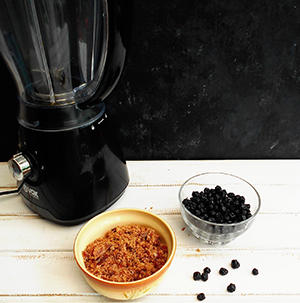
Repeat with the blueberries. You can leave some of the blueberries intact, if you’d like, so you get a more interesting texture.
Cut the tallow into cubes. Place the tallow in a large pot, and heat over medium-high heat. Do not increase the heat any higher or you may destroy fatty acids, which will result in poorly made pemmican. Stir the tallow constantly for 10 minutes. The first layer needs to melt in order to prevent the tallow from burning. After 10 minutes, the tallow will begin to melt easily, and you can stir it every 10 minutes.
After 30 minutes, reduce heat to medium-low. Make sure you continue to stir the tallow every five minutes.Continue to melt the tallow until the mixture begins to boil. This will take an additional 30 minutes.Strain the tallow through a fine mesh sieve, and remove any solids.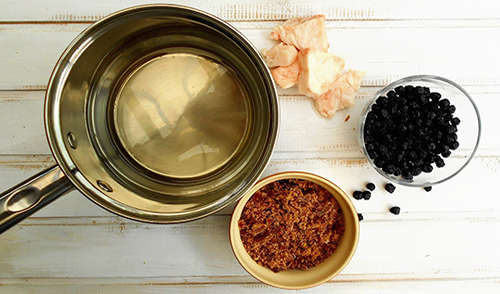
The amount of dry ingredients and the fat should be the same. Remove some of the fat if needed, and use a scale. Mix the beef into the fat. Add the blueberries. Stir until it is well blended.
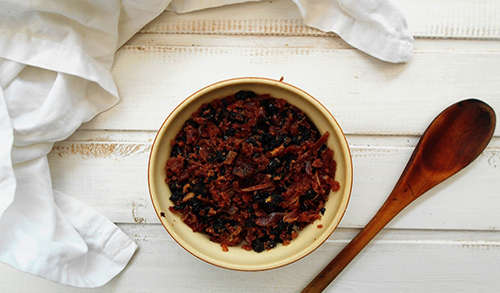 Place the pemmican aside to cool. Once the pemmican is room temperature, divide the mixture among Ziploc bags or plain plastic bags. The key is to press the pemmican and remove as much air as possible.
Place the pemmican aside to cool. Once the pemmican is room temperature, divide the mixture among Ziploc bags or plain plastic bags. The key is to press the pemmican and remove as much air as possible.
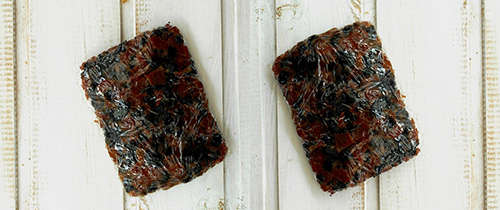 Store your pemmican in a dry place.
Store your pemmican in a dry place.
Related: The 5 Survival Foods that Saved Lives During World War II
Pemmican After 1 Year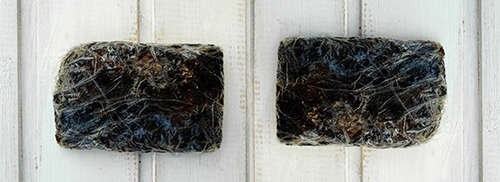
Properly prepared pemmican can be stored and consumed for years. No wonder this product is a key food that explorers brought on their journeys.
After the pemmican has been prepared and stored in a cold and dry place, here are the first observations:
- The pemmican has been removed from storage. After removing the protective wrap, you will naturally pick up the scent. The pemmican has a gentle scent of dried beef mixed with sweet berry scent and a deep, complex scent coming from the lard. If using other types of meat, the pemmican can develop other scents. For the comparison, this pemmican tastes like pot roast strands that have browned a bit. Not bad at all.
- After picking up the scents, the next thing to notice is the texture. We have used partially chopped blueberries, and our pemmican has some chunks. If you completely grind the blueberries, the texture will be much smoother. Still, our pemmican is quite smooth and fatty and melts in the mouth. Those berry chunks are there just to create some fun, and we suggest you do the same. Because the pemmican is made of ground ingredients, the texture is smooth and kind of pasty in the mouth.
- When it comes to taste, the pemmican does not have a flavor that would satisfy gourmets, but since this is a survival food, we will not worry too much about the flavor. The flavor itself is not terrible but instead is kind of bland because of the large amount of fat. That fat is necessary, however, as it preserves the pemmican. Luckily, the blueberries bring a hint of sweetness, and the beef flavor cannot be completely neglected. After a few bites, your palate will adjust, and some of the beef flavor will be picked up.
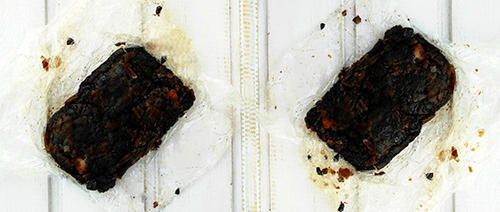 Overall, this pemmican is just great! The initial aromas are not too heavy, it is kind of sweet and fatty, the texture is fine with some berry chunks, and when it comes to the taste, it tastes like fatty beef with a hint of sweetness. After unwrapping, some chunks may fall off, but you can prevent that by completely grinding your ingredients. Still, pemmican with chunks has a much better texture.
Overall, this pemmican is just great! The initial aromas are not too heavy, it is kind of sweet and fatty, the texture is fine with some berry chunks, and when it comes to the taste, it tastes like fatty beef with a hint of sweetness. After unwrapping, some chunks may fall off, but you can prevent that by completely grinding your ingredients. Still, pemmican with chunks has a much better texture.
You may also like:
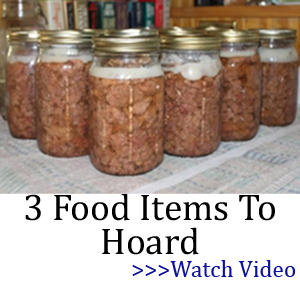 How To Make Delicious Lard With 2 Years Shelf-Life (+ 5 Tasty Recipes)
How To Make Delicious Lard With 2 Years Shelf-Life (+ 5 Tasty Recipes)
Cheap and Easy to Build Root Cellar in Your Own Back Yard (Video)

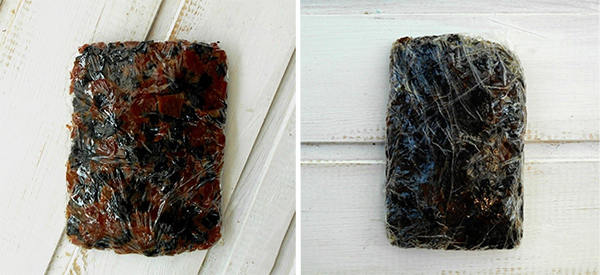













The article says Pemican is to be stored in a “cold dry place”. How cold is cold? Please give me some examples of an acceptable place to store it. I live in Nevada.
Hi, I live in Nevada, and made a small batch. I just keep it in the pantry. It is cool inside the house. A/C runs in summer and keeps house cool. I think it means, don’t put it in some outdoor smoke house, or hang outdoors.
Keep it in the cool house. I am testing my little batch.
So far so good , in the storage pantry.
Thank you, that helps.
My pantry has a constant temperature of 53 (°F)
I also believe that cold root cellar temperatures are ideal for longevity… that’s how some people are getting 10+ years of storage… I read that if average room temp storage it would be better to plan for 1-2 years
How / where did you store your pemmican ? The article implies no refrigeration / freezer , etc.
I have stored it the first 24 hours in the fridge – 46 (°F)
Afterwards,it has been stored in my pantry, constant temperature of 53 (°F)
FYI, Spam is tasty and according to the manufacturer, has an “indefinite” shelf life. Just saying.
YES YES YES…SPAM is the King of Long Term Stored meats?They opened some cans a couple of years ago from WW2..Still good
We used to get Spam as government surplus when I was a kid. (Before food stamps, etc) it was good fried but we never bought it when times were better.
Used some from my prepping supplies, and cut it thicker than my Mom did, and I wasn’t thrilled with the taste. I couldn’t let the rest go to waste so over the next week or so cut it in thinner slices, similar to bacon, and cooked it like bacon to get it kind of crisp. It tasted great, similar to bacon. I also cut it in bits, cooked again like bacon, and added them to salad (when cooled), or scrambled eggs, or omlets, hard to tell it wasn’t bacon. It was good and will try it for other bacon substitutes. It made me happy because now I know it will be good to eat when the time comes, and also now because it seems like bacon has not only become much more expensive, but doesn’t taste so good either.
Did you use tallow or lard? They are two different kinds of fat. You said you used tallow and then you referred to lard later in the article.
Tallow comes from beef or mutton. Lard comes from pigs. Inasmuch as the indians didn’t have beef, mutton nor pork, they probably used the fat from venison or bison. I think it is important to specify which fat you used.
Great point..we have access to many more different fats than the inventors of the stuff had.
Same with adding salt/other spices to the mix.They had wild game fats,local sourced berries and such to mix with their meats and that was about it.
I have used tallow ,but I made some with lard too.
It is a bit fattier with lard.
The beef in the picture looks pretty lean. What cut of beef did you use?
The butcher could slice it for you in the butcher shop on his meat slicer. If they prepare beef for sukiyaki, they can cut the beef for pemmican.
As for storing in a cool dry place, I would wrap the pemmican in its plastic wrapper in several layers of newspaper. Then I would place it in a styrofoam ice chest. You can store it in the coolest room in your house in a closet, preferably not a closet that backs up to a bathroom where there is a shower or bath tub. Both the newspaper and the styrofoam ice chest act as insulation.
If you prefer, you can place the pemmican in its plastic wrapper in a styrofoam ice chest and fill the ice chest with styrofoam pellets. They also act as insulation. I keep water in my car in a styrofoam ice chest and even on the hottest day with the car sitting in the sun when I check the water it feels cool to my touch which means it is less than 98.6 degrees even though the air temperature in the car is probably close to 150°F.
I used top loin
Can lard or bacon grease be used in place of tallow?
Mike
No. It’s necassary to use grass fed beef fat if you want it to last a very long time.
Being skilled and able to make such as Pemmican or one of the Cold Flour mixes doesn’t mean we should dedicate resources(time,Ingredients,Labor etc) now when we can easily purchase premade items with better packaging and save this sort of endeavor for Bad Times….I ran a price check and including the time spent I can easily put back larg(er) amounts of jerky,energy bars(We use/prefer Millennium Bars) etc….Great skill to have but our TBD(time before disaster) is getting slim…JMO…Good article on the “year later” angle?
I made pemmican last year, out of curiosity. I had read several books about native Americans, and wondered what it was. I used a local university’s recipe. It used tallow as the recommended fat source. The only thing I noticed that was different from Claude’s recipe was the amount of fat. The discussion was about how the area you live in decides how much fat you use. In a colder weather climate, you will need more calories, therefore, more fat. Starting with just enough fat to hold the dry mixture together, and adding up to the half fat/half dry amount. As a personal note…I thought it was gross. (So did the four family members that tried it.) If it was a matter of survival, I could eat it, but… Lol.
Wouldn’t adding salt and pepper, maybe some spices, improve the flavour immensely. I’m willing to admit I don’t know how the pepper and spices would fair long term but adding salt should only extend the life as it’s a preservative. Right? Or am I missing something?
If the flavor was bland, maybe some salt added would help, considering salt is one of the best long – term preservatives.
As to whether to bother making it now, versus making it after SHTF; learning how and learning to develop an appreciation for the flavors and textures of any survival food well ahead of time makes a LOT of sense. There are ways to cook with pemmican and other foods of similar ilk, as well, and getting to know what works for you, and what doesn’t is best done before your life depends on it. Also, just because there are items like it available for purchase now, doesn’t mean they are the wisest to keep. The preservatives and other additives do our bodies no favors, and have the potential to be detrimental in the long run, if relied upon, too heavily.
I can see using this to cook with. I was turned off by the amount of fat and the feel of the fat in my mouth.
” In the long run …” , we are all dead !
Do you want to survive for the long run or not ?
Your body needs fat, especially if you are working hard and / or in a cold climate. You will die on a rabbit diet ( cause no FAT ! )
Who are you talking to? I have no issues with the fat content, and didn’t say anything about changing the fat content. We’re on the key diet. I eat vegans.
Very good article, like watching a chef make Pemmican on a cooking show. Recipes for Pemmican vary widely, meat fat and a nut or berry, an absolutely primitive dish and great way to store excess food for the winter.
Unless you have to bug out and spend a long time getting to your destination, I see no reason for Pemmican when you can make delicious meat easier by canning it in jars. How long have some people found canned meat in jars to last? I’ve gone 3 years without losing any flavor.
You know Spike I ate a jar of deer meat last night that was 6 years old and it was great a little gravy and some rice and we had a great meal
Native Americans didn’t use much salt, either as a preservative or a seasoning. This may have been a question of access as well as tradition. Salt also attracts moisture from the air ( leave a spoonful of salt on a plate on a hot humid day and see what happens), so its use in pemmican may not be the best thing. It was eaten as is, but more often used to season vegetable stews and make them more nutritious.
I always thought that inland indians didn’t have access to salt unless it was brought from the oceans by trade. Last year I read a book on ways of the 19th century and it talked about a salt bank along a river in Kansas, so apparently there are areas of exposed salt in inland U.S. The book had some very interesting articles, including the traditional way to prepare buffalo hump and the best way to rig a cannon on board a sailing ship for firing at sea. Both skills don’t have a lot of application in 21st century SoCal, but hey, who knows, maybe someday I will really wish I had paid more attention to the traditional way to prepare buffalo hump.
Many places that are dry and high have salt (licks), because million of years ago the ground was under a ocean. See Salt Lake, Utah etc.
The great salt plain West of Salt Lake City would be an obvious exception.
how about the nutritional aspects–how calories and how much protein did your pemmican bar have–that;s really the bottom line–and how does the nutritional content compare with a power bar or a can of spam?
If the grid goes down and you have a quarter beef in it, turn it into Pemmican to preserve for the long term ! Good reason to learn how NOW .
I am allergic to beef. Can chicken, pork or venison be used?
I believe any type of lean meat would work, as long as it is completely dried. What I have studied, mixed berries were used in a batch, dried of course, with the same ratio (meat, berries, tallow), then put into a bag made of rawhide, then filled with bear grease (preferred). Bear fat is kinda hard to come by, so I’m using beef, which doesn’t help you. As LCC stated above, mutton, buffalo or venison may work for you. No salt. Hope this helps – Dave
I made Pemmican eight years ago, wrapped each portion in Saran Wrap, put them in a double sealed gallon zip lock bag with two five-gram silica packets to absorb moisture.
I did ten in pint zip lock bags the same way for testing year-after-year and as of last May, they were still good.
I used dried blueberry, strawberry and banana for flavoring and all are still good.
Actually you can survive with rabbit IF you eat the guts as well. Liver, glands kydney all are rich in fat, minerals and vitamins. We tend to only eat the meat which will leave you fat depraved.
Ya… and the tape worms from rabbit guts should leave you slim and trim.
I believe that powdered herbs would be an acceptable additive but don’t know for sure. I have made sausage from Jack Rabbits, Coots (related to duck) and Vension or Pig with pork fat and herbs. Meat kind of is meat. I’m pretty sure that our ancestors used whatever meat they had at the time (?!?).
Re; Various fats? Venison fat is nasty and goes rancid easily. How would Beaver or Woodchuck fat work? Gotta use what’s available.
I’ve always wondered how one keeps the fat used in pemmican from going rancid. Most fat becomes rancid with time.
This always confused me as well, until someone explained the science of it to me.
First: it’s important NOT to use muscle fat or even raw suet for this recipe. As you say, it WILL go bad. Instead, use tallow (rendered kidney fat).
If you can even find tallow in the store, it is probably stabilized with flour, so not as good for long-term storage. Instead, it’s best to get kidney fat from the butcher, and render it yourself. For those unfamiliar with the rendering process, YouTube has lots of great how-to videos. I recommend the one from the “Townsends” channel – found here: https://www.youtube.com/watch?v=ypRsO9KdxXk
Tallow is far denser than muscle fat or lard (it’s almost like a candle or block of soap at room temperature), and this locks out air. No oxygen, fewer bacteria. Fat is also hydrophobic, which repels surface moisture; and this discourages anaerobic microbes such as those responsible for botulism.
A final note about air: The addition of dried berries to pemmican increases the acidity – which is another factor in discouraging rot. However, it is important to reduce both the meat and the berries to as fine a powder as possible. Chunks offer an interesting texture, and are great for shorter-term use like camping trips. However, chunks also create air-spaces, which shortens the shelf-life of the product. It would be fine for a week or season in the pantry, if properly stored; but, for years-long storage, it really needs to be as fine a powder as possible.
Finally, as with most stuff, keeping it in a cool, dry place (a dry cellar or the like) will maximize storage.
With all these factors taken into account, there’s no reason pemmican won’t last five, ten, even thirty years. This is why the explorers of old used to call it “iron ration.”
In my military unit survival course, we were told that if there were signs that the critter had Tularemia that we should avoid eating the rabbit…{I don’t remember what the signs are: it was a discoloration of one of the solid organs}.
Making pemmican has been on my list for a while – just out of curiosity, and for practice. Since I don’t have any to experiment with, has anyone else heard of, or tried making “stew” from your pemmican? I’ve read instances in a few places of crumbling a chunk or two into water together with vegetables/plants from storage, harvested in the wild or found along the trail. This wouldn’t work if you didn’t have a way to cook, but even in an iron pot over a fire, it might be more palatable than pemmican by itself. (Not that it sounds bad to me, but other commenters have described something less than delicious)
It sounds like it would make a pretty tasty, warming soup that I intend to try one of these days soon – after I make my first batch…
I know this is a long time ago, but yes – look up ‘rubaboo’ – that is exactly the stew that you’re describing. Also, ‘rechaud’ as a different preparation method (pan-fried with onions).
I made pemmican several years ago, using grass fed beef and fat and blueberries and put the mixture in pint jars. It made three pints and it has been stored in the back of my pantry in my home for at least 6 years or so. I have been a little afraid of eating it, not knowing how long it should last. I don’t have a basement or root cellar so the pantry is the coolest place in my house to store it. I guess when the time comes I may have to try it.